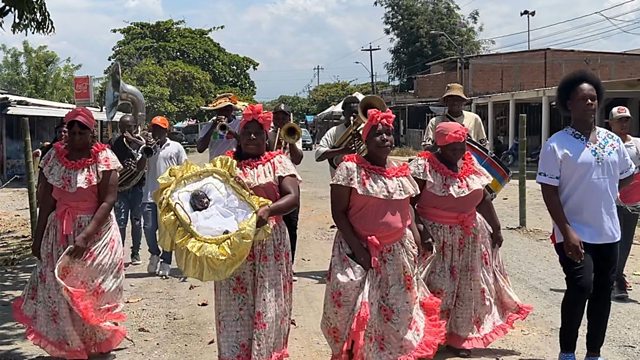A Colombian Christmas in February
How the days of slavery led to the tradition of Christmas celebrations in February in the Colombian town of Quinamayo.
In the heart of Colombia, very special Christmas celebrations take place not in December but in February. Its roots lie in the days of slavery when many Afro-Colombians were serving their masters' festivities during that time.
In an act of cultural and racial resistance that has been preserved for nearly 200 years, Christmas celebrations in Quinamayo are held 40 days after the traditional birth date of Jesus and the amount of time that the Virgin Mary is said to have rested after delivery. The town becomes abuzz with music and dancing. Brass bands parade through the streets, local children gather around a black baby Jesus playing biblical characters from the New Testament and female leaders known as Matronas are resplendent in their traditional colourful costumes.
A celebratory dance - the juga - is performed with shuffling feet, a reference to how their ancestors were once burdened with chains around their ankles. Once a symbol of repression, it is now reinterpreted as an act of resistance and freedom. Christina Noreiga asks how the celebrations came about and why they have a special magic for both young and old.
Presenter: Christina Noriega
Producer: Katie Buchanan
Researcher/fixer: Jair Coll
Editor: Martin Buchanan
A Play it by Ear production for 成人快手 World Service
(Photo: Matronas parade with a black baby Jesus. Credit: Jair Coll)
Last on
More episodes
Broadcasts
- Fri 10 May 2024 03:32GMT成人快手 World Service
- Fri 10 May 2024 12:32GMT成人快手 World Service except East and Southern Africa, News Internet & West and Central Africa
- Fri 10 May 2024 17:32GMT成人快手 World Service East and Southern Africa & West and Central Africa only
- Fri 10 May 2024 21:32GMT成人快手 World Service except East and Southern Africa, Europe and the Middle East & West and Central Africa
- Fri 10 May 2024 22:32GMT成人快手 World Service Europe and the Middle East
Podcast
-
![]()
Heart and Soul
Personal approaches to religious belief from around the world.


